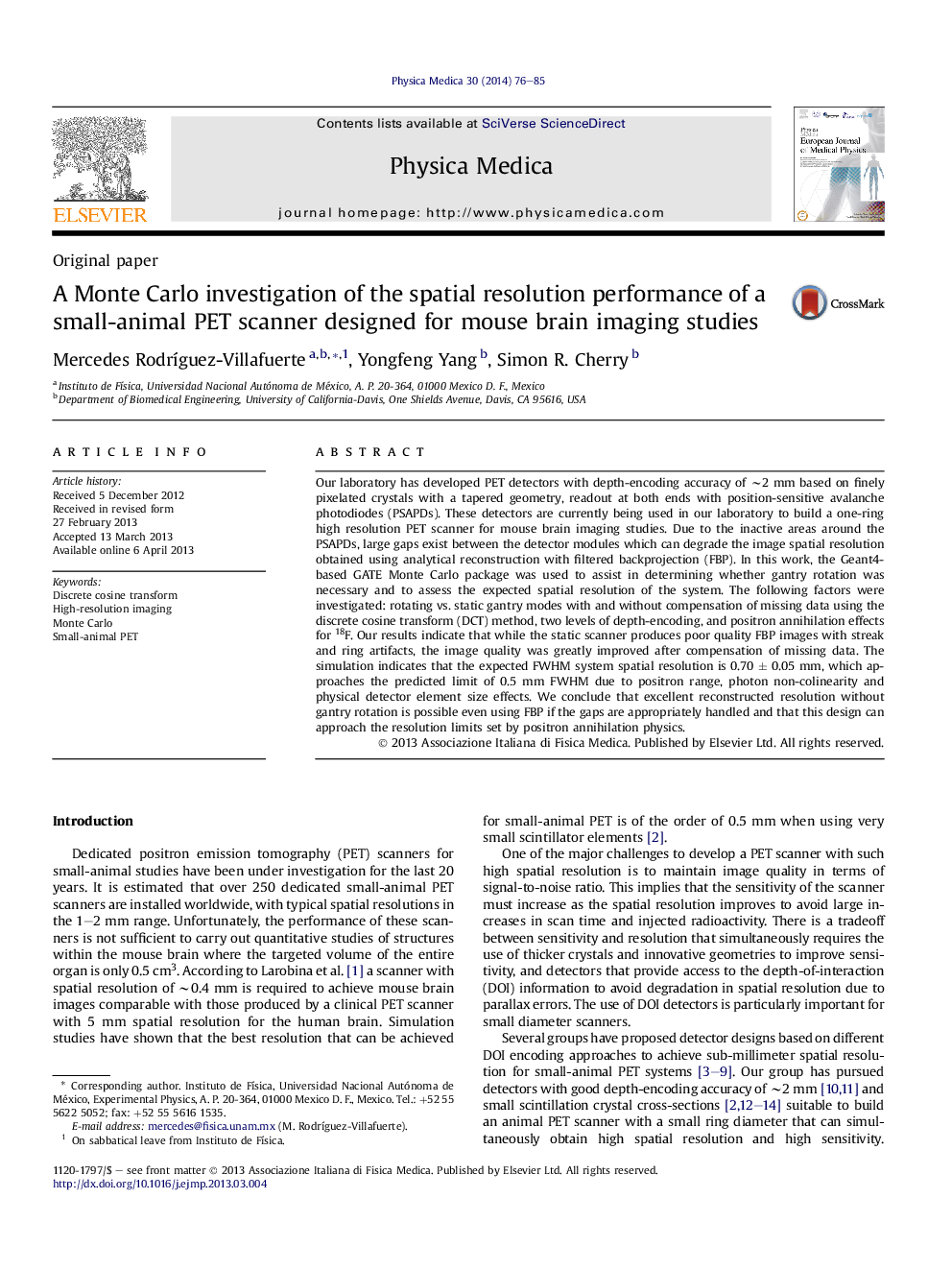| Article ID | Journal | Published Year | Pages | File Type |
|---|---|---|---|---|
| 1882502 | Physica Medica | 2014 | 10 Pages |
Our laboratory has developed PET detectors with depth-encoding accuracy of ∼2 mm based on finely pixelated crystals with a tapered geometry, readout at both ends with position-sensitive avalanche photodiodes (PSAPDs). These detectors are currently being used in our laboratory to build a one-ring high resolution PET scanner for mouse brain imaging studies. Due to the inactive areas around the PSAPDs, large gaps exist between the detector modules which can degrade the image spatial resolution obtained using analytical reconstruction with filtered backprojection (FBP). In this work, the Geant4-based GATE Monte Carlo package was used to assist in determining whether gantry rotation was necessary and to assess the expected spatial resolution of the system. The following factors were investigated: rotating vs. static gantry modes with and without compensation of missing data using the discrete cosine transform (DCT) method, two levels of depth-encoding, and positron annihilation effects for 18F. Our results indicate that while the static scanner produces poor quality FBP images with streak and ring artifacts, the image quality was greatly improved after compensation of missing data. The simulation indicates that the expected FWHM system spatial resolution is 0.70 ± 0.05 mm, which approaches the predicted limit of 0.5 mm FWHM due to positron range, photon non-colinearity and physical detector element size effects. We conclude that excellent reconstructed resolution without gantry rotation is possible even using FBP if the gaps are appropriately handled and that this design can approach the resolution limits set by positron annihilation physics.
